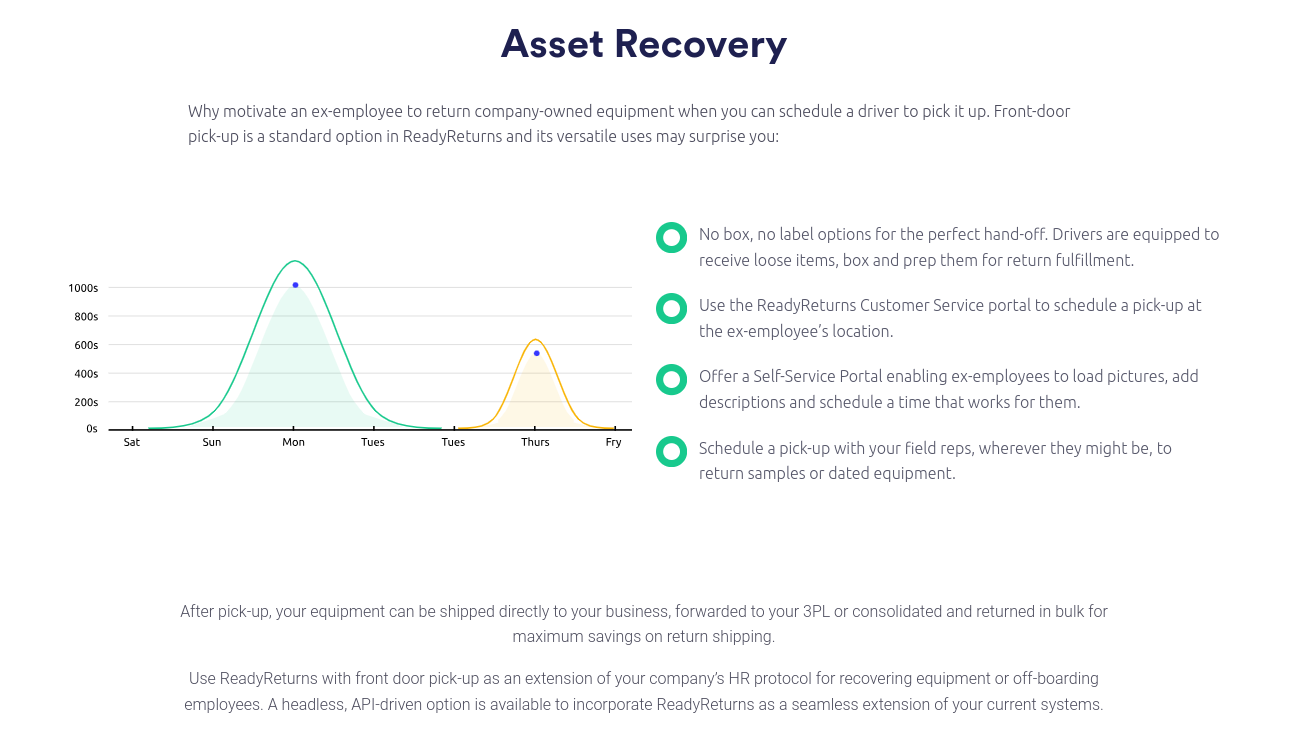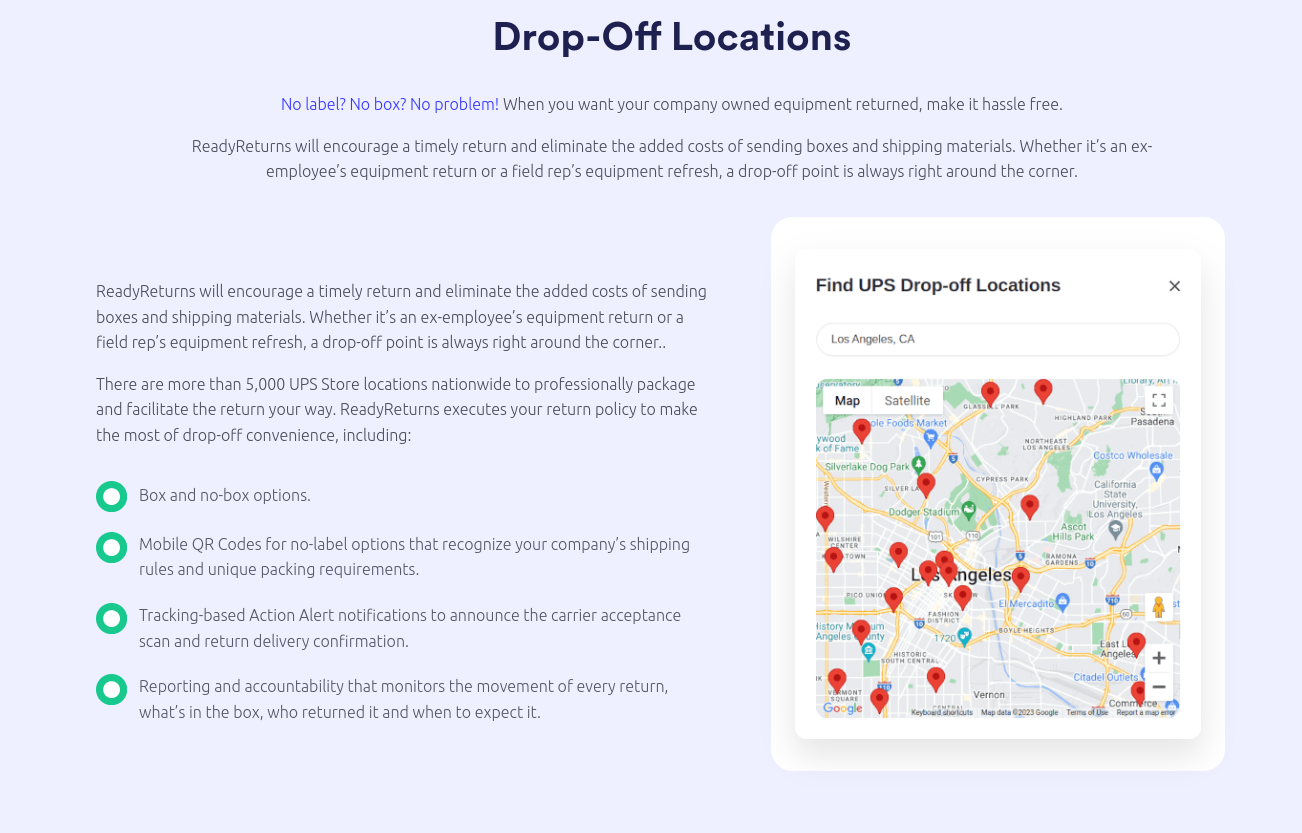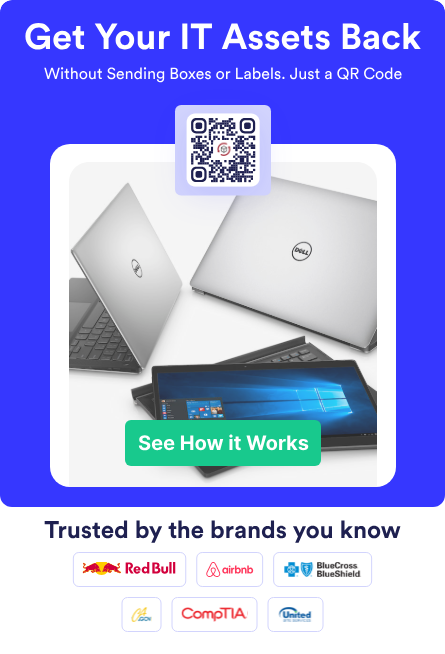Best Practices for Retrieving Tech Gear from Remote Employees

Retrieving tech equipment from employees who work from home has become a bigger challenge for businesses supporting more remote workers. Whether it’s laptops, monitors, or other vital tech gear, companies often struggle to get these items back, especially after layoffs, resignations, or contract terminations.
If equipment isn’t returned on time, it can lead to costly consequences. Damaged, lost, or unreturned devices not only cause financial losses but also pose significant data security risks. And for IT departments, dealing with unreturned tech gear can quickly turn into a logistical nightmare.
But here’s the good news: by adopting organized strategies and best practices, businesses can significantly reduce the hassle of retrieving tech gear. Today’s guide will break down the steps needed to make the process smoother, from internal policy creation to leveraging tech tools for automation throughout the entire lifecycle of company equipment and technology. Let’s dive in step by step to how the right tools can help you secure valuable company IP and equipment from departing employees.
Establish a Clear Equipment Return Policy
A well-crafted equipment return policy is the foundation of a successful tech retrieval process. Remote employees need to understand, from day one, the procedures for returning company equipment and the consequences if they don’t.
Why Clear Return and Exchange Policies are Critical
Without a formal, easy-to-understand return policy, the chances of employees delaying or skipping the return of their tech gear skyrockets. Not only does this lead to unnecessary complications for your IT team, but it also exposes the company to risks like lost assets or breaches of sensitive data. A solid policy helps set clear expectations. Learn more about how streamlined return policies can prevent these issues.
Components of a Return Policy
- Instructions for Returning Tech Gear: Outline the steps for returning company-owned items. Provide detailed instructions on how to pack the equipment, what accessories to include, and how to ship it safely back to the company.
- Clear Deadlines: Employees should know the deadlines for returning equipment after their employment ends. Whether it’s within a week after resignation or immediately after termination, deadlines should be non-negotiable.
- Consequences for Non-Compliance: Be upfront about what happens if items are late, damaged, or unreturned. Some companies deduct costs from the final paycheck, while others take legal action. Employees should be fully aware of these consequences.
- Support for Logistics: Make the process as painless as possible for employees by providing prepaid shipping labels or offering local drop-off locations.
Communication is Key
This policy needs to be communicated at multiple touchpoints—during onboarding, throughout employment, and as part of the offboarding process. Don’t just tuck it away in the company handbook; be sure to have employees sign an acknowledgment of responsibility for all company equipment issued to them, both at the beginning and end of their employment.
For more on this, check out our in-depth guide on ensuring compliance with Remote Worker Laptop Return: Skyrocket Compliance, Get Gear Back.
Use Tech Solutions to Track Equipment
Tracking tech equipment manually can quickly become a tedious, error-prone task—especially if you’re managing a dispersed remote workforce. The more remote employees a company has, the harder it becomes to ensure every piece of equipment, from laptops to peripherals, is accounted for. This is where asset tracking software comes in.
By automating the process, businesses gain real-time oversight into their assets, which significantly reduces the risks of lost, stolen, or unreturned equipment. Check out how IT Asset Management Best Practices can make this process even smoother.
What Asset Tracking Software Does
Asset tracking software doesn’t just log what equipment is in circulation—it provides an extensive overview of every device, allowing businesses to track its entire lifecycle. With ReadyCloud’s IT Asset Management tools, companies can record critical information, such as:
- Purchase Date: When the equipment was originally acquired, which helps with maintenance schedules and warranty tracking.
- Assigned Employee: Who is responsible for each device, a critical point of accountability.
- Serial Numbers: Unique identifiers that ensure proper tracking and reduce the risk of mix-ups or theft.
- Device Condition: Logging the condition of each device helps with depreciation records and ensures the tech is returned in proper working order.
This comprehensive logging provides IT managers with a bird’s-eye view of all the tech assets in use, whether those devices are scattered across the globe or concentrated in one location. What’s more, it can help streamline return processes when employees leave the company. Learn more about how ReadyCloud can streamline retrieving remote employee laptops without boxes or labels.
How Asset Tracking Works Across Industries
Asset tracking isn’t just for tech companies or IT departments. It’s essential across various industries, from political campaigns to healthcare and retail. See how streamlined inventory management plays a crucial role across industries.
Provide Prepaid Shipping or Pickup Services
Convenience can make all the difference when it comes to tech returns. Offering prepaid shipping labels or arranging for scheduled pickups is a great way to encourage timely equipment returns.
Prepaid Shipping Labels
Prepaid labels simplify the process for employees by eliminating the need to figure out shipping costs or logistics. It also allows companies to track the return shipments easily, helping avoid lost packages. See how ReadyReturns simplifies this process for large-scale returns.
Legal Considerations and Employee Accountability
On top of clear policies, businesses should ensure there are legal agreements in place that bind employees to return equipment. It’s about setting expectations from the start and having legal backup in case something goes wrong. Learn more about creating a solid return policy to prevent future issues.
Streamline Tech Gear Recovery with Smart Solutions
Retrieving tech gear from remote employees doesn’t have to be a complex or stressful process. By implementing clear return policies, utilizing asset tracking software, and automating offboarding tasks, businesses can significantly reduce the risks associated with lost or unreturned equipment. These best practices not only protect against financial loss but also safeguard sensitive company data. When policies are supported by tech solutions like real-time asset tracking and automatic return reminders, the entire process becomes much more efficient, saving time and reducing headaches for your IT and HR teams.
 ReadyCloud connects the dots by offering a comprehensive IT asset management solution that helps companies manage their equipment effectively. With seamless integration options, real-time tracking, and automated offboarding workflows, ReadyCloud takes the complexity out of retrieving tech gear from remote employees. Whether you’re managing hundreds or thousands of devices, ReadyCloud’s tools ensure that your equipment is returned on time, in good condition, and with maximum data security. Ready to simplify your tech recovery process? Explore how ReadyCloud’s IT Asset Management Tools can dramatically improve how your company handles remote employee equipment.
ReadyCloud connects the dots by offering a comprehensive IT asset management solution that helps companies manage their equipment effectively. With seamless integration options, real-time tracking, and automated offboarding workflows, ReadyCloud takes the complexity out of retrieving tech gear from remote employees. Whether you’re managing hundreds or thousands of devices, ReadyCloud’s tools ensure that your equipment is returned on time, in good condition, and with maximum data security. Ready to simplify your tech recovery process? Explore how ReadyCloud’s IT Asset Management Tools can dramatically improve how your company handles remote employee equipment.
 Simplify Tech Gear Recovery with Smart Solutions
Simplify Tech Gear Recovery with Smart Solutions
Take control of your tech gear recovery process today with ReadyCloud’s IT Asset Management Tools. Streamline equipment returns, reduce financial risks, and protect sensitive data with real-time tracking and automated workflows.

Whether you’re managing a small team or thousands of devices, ReadyCloud’s seamless integration ensures that your tech is back on time and in good condition, every time.
Ready to make equipment recovery hassle-free? Start Using ReadyCloud now and simplify your tech returns with smart solutions.
What You Should Do Now
Offboarding remote employees? Need your company devices back? Here are three ways we can help you retrieve devices from remote employees:
Schedule a Demo – If you want to recover remote employee devices without sending a box or label, just a QR code, schedule a demo of ReadyCloud IT Asset Retrieval. We’ll tailor the session to your company’s needs and address any questions.
Integrate with Your Current Tools – Install the ReadyCloud IT Asset Retrieval app directly in your ServiceNow, Jira, or Freshservice instance to issue QR codes from your existing workflows. Have a custom system? Contact us for our headless API.
Get the Free Guide – Unveil the 7 critical pitfalls companies encounter when recovering remote employee IT assets, and prevent costly mistakes, low recovery rates, and wasted resources.
Share On:




